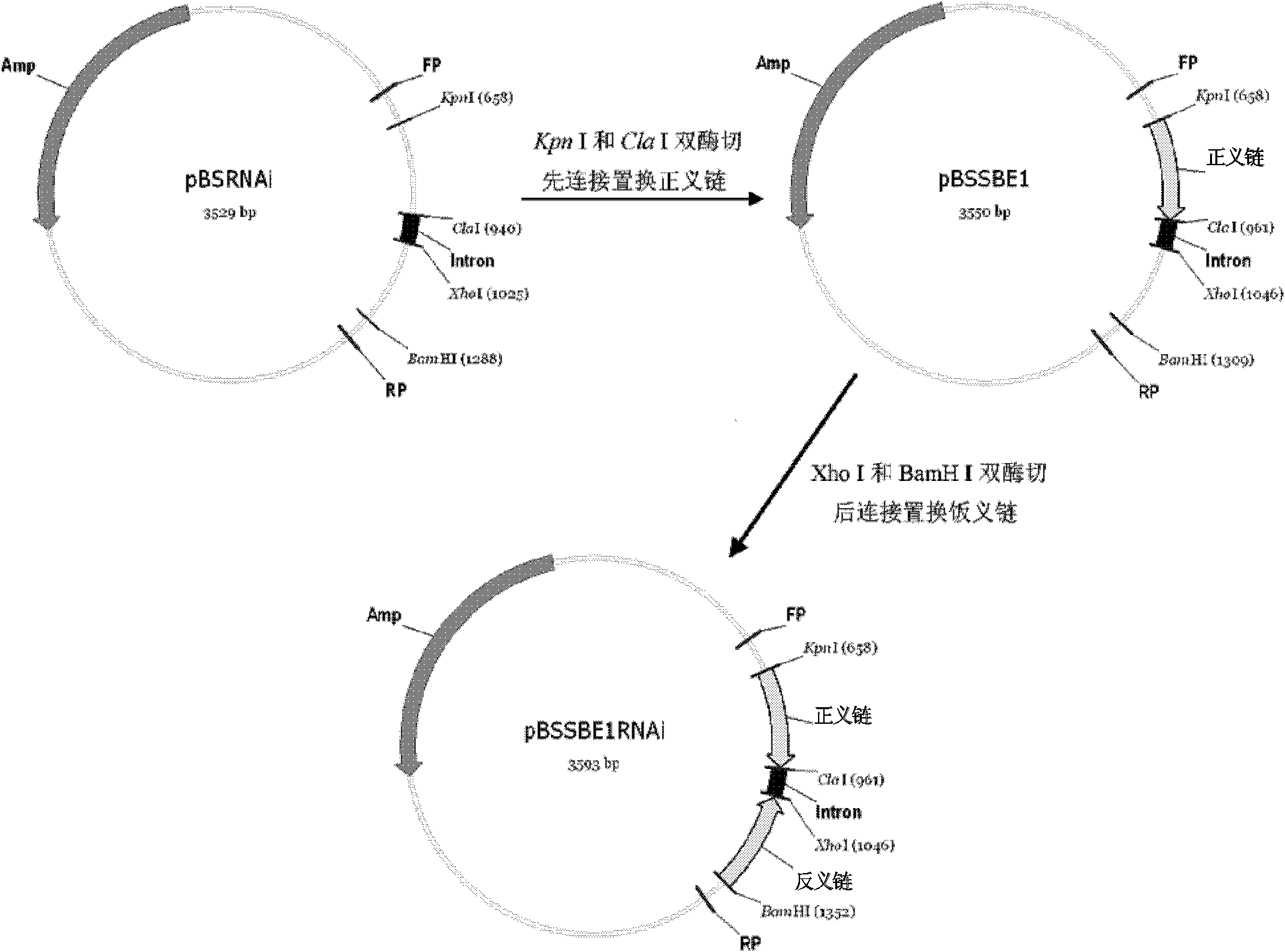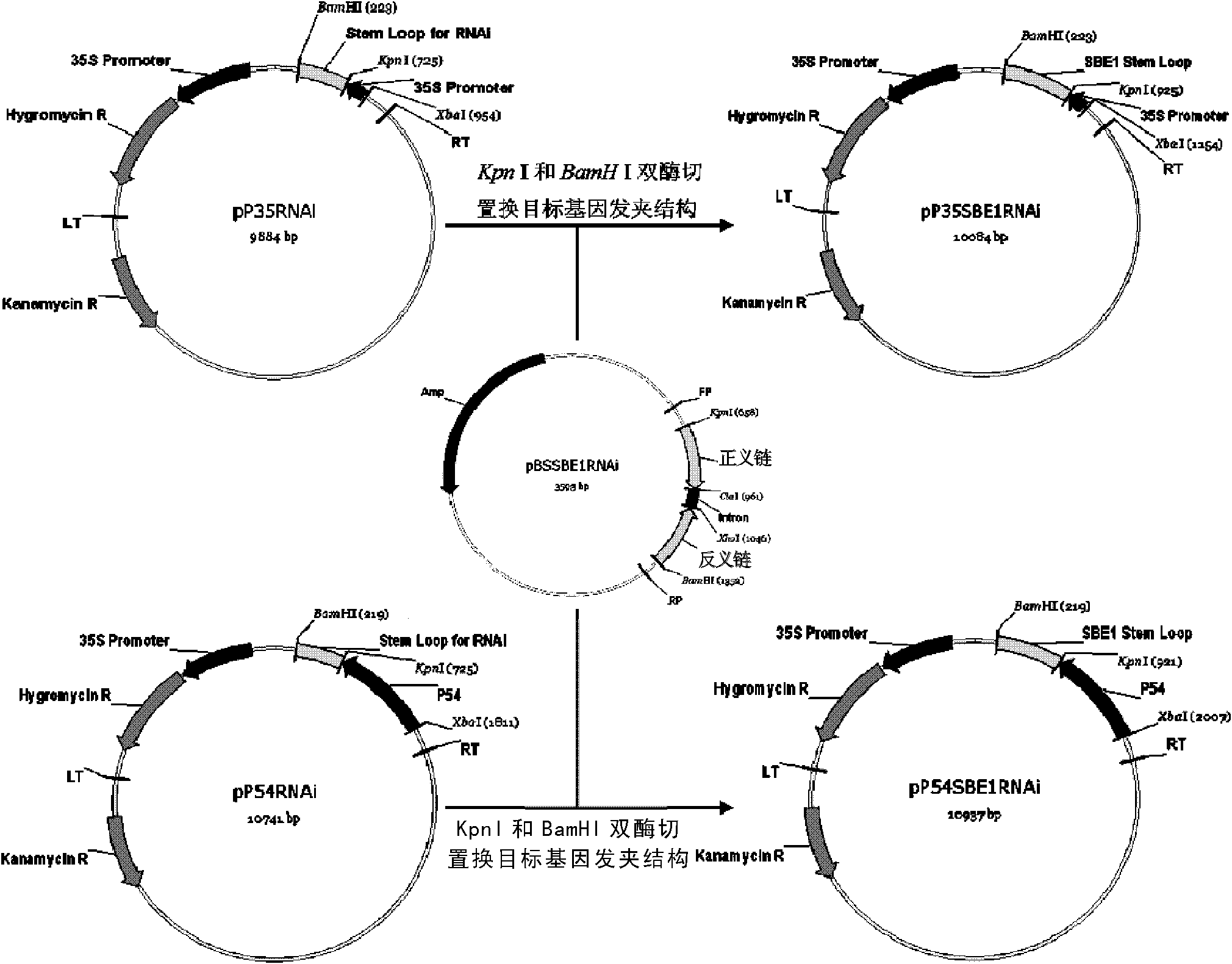Method of adjusting content of plant amylose and amylopectin
A technology of amylose content and plants, applied in the fields of botany and molecular biology, can solve the problems of difficulty in meeting the urgent needs of the starch processing industry and time-consuming problems
- Summary
- Abstract
- Description
- Claims
- Application Information
AI Technical Summary
Problems solved by technology
Method used
Image
Examples
preparation example Construction
[0100] The present invention has no particular limitation on the preparation method of the polynucleotide fragment, including but not limited to: chemical synthesis method, in vitro transcription method and so on. It should be understood that those skilled in the art can prepare the polynucleotide fragments in various ways.
[0101] construct
[0102]According to the polynucleotide sequence provided by the present invention, it is possible to design a polynucleotide construct that can be processed by the plant to interfere with the gene expression of GBSSI, SBEI or SBEII after being introduced into the plant, thereby affecting the expression of GBSSI, SBEI or SBEII Gene expression to regulate starch composition in plants. Therefore, the present invention provides an isolated or artificially constructed polynucleotide construct, which can be transcribed by plant cells and expressed as the small molecule RNA in the cells. As a preferred mode of the present invention, the polyn...
Embodiment 1
[0213] Embodiment 1, the detection of sweet potato regeneration plant
[0214] 1. Rooting test
[0215] Randomly select 379 strains from the regenerated plants and carry out the rooting test on the medium containing hygromycin, the results show that 92.35% (350) strains can take root and grow normally on the SBM containing 10mg / L hygromycin , when the concentration of hygromycin was increased to 20mg / L for more stringent selection, 349 of these lines could still take root and survive within a week. In view of the fact that high concentrations of hygromycin have a certain inhibitory effect on the growth of transgenic plants, showing that the growth of the plants is slowed down, it is a cheap, convenient, fast and effective way to eliminate false positive strains by screening with 10mg / L hygromycin, and at the same time, it can carry out transgenic The expansion of strains provides enough materials for subsequent experiments.
[0216] 2. PCR detection
[0217] A pair of speci...
Embodiment 2
[0227] Embodiment 2, the quality determination of transgenic novel starch
[0228] 1. Amylose content
[0229] With reference to the standard method for determining the amylose content of rice, the amylose content of the existing sweet potato and common crop starches that have not been transgenic by the inventor was determined, as shown in Table 6. The results showed that the average amylose content of the five sweet potato varieties used for genetic transformation ranged from 28% to 31%.
[0230]Restricted by the limitations and accuracy of the absorbance method, when the amylose content in rice is less than 5%, it can only be qualitatively explained that the amylose content is very low and cannot be accurately measured. The measured value of the amylose content of glutinous rice starch in Table 5 also confirmed this conclusion. Therefore can be defined as novel waxy sweet potato when the sweet potato starch amylose content that records is lower than 5%, the amylose content...
PUM
 Login to View More
Login to View More Abstract
Description
Claims
Application Information
 Login to View More
Login to View More - R&D
- Intellectual Property
- Life Sciences
- Materials
- Tech Scout
- Unparalleled Data Quality
- Higher Quality Content
- 60% Fewer Hallucinations
Browse by: Latest US Patents, China's latest patents, Technical Efficacy Thesaurus, Application Domain, Technology Topic, Popular Technical Reports.
© 2025 PatSnap. All rights reserved.Legal|Privacy policy|Modern Slavery Act Transparency Statement|Sitemap|About US| Contact US: help@patsnap.com



